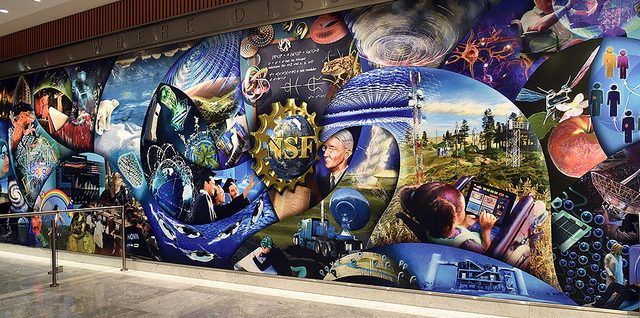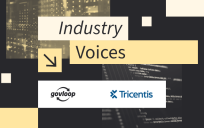Dorothy Aronson’s vision for empowering federal employees is far bigger than technology alone.
As the National Science Foundation’s (NSF) chief information and chief data officer, she has been on a mission to create an environment where reskilling and upskilling are commonplace, and where employees are not only enabled to do their current jobs but also well-positioned to take on new roles in the future.
For Aronson, the COVID-19 pandemic isn’t driving her modernization strategy. Instead, it has expedited plans that were already in the works, including migrating on-premise data to the cloud, adopting the Zoom platform, and rolling out workflow software that supports e-signatures and automated document routing.
But what good are any of these tools if employees don’t use them? In an interview with GovLoop, Aronson explained that NSF’s ability to quickly pivot to fully remote work for employees and to conduct core operations virtually wasn’t solely a result of having the right tools in place. These outcomes came from ongoing and collaborative dialogue between IT professionals and the end users who need the technology.
The priorities are to move continuous operations with continuous modernization. That’s our mantra. And the reason for that is because IT is continuously changing [and] we have to continuously adopt and change with it. We have a very gradual approach to implementing these technologies, so we’re always in the middle of deploying a few new things. And we do it at people’s pace. We don’t want to be disruptive to people’s priorities.
She also credits the agency’s nimbleness to the fact that nearly all employees have laptops that support their telecommunications and computing needs on a single device. But the pandemic has inspired people to more readily embrace technologies and new ways of working.
From our perspective, it was amazing how eager people were to learn and how easy it was. We had been through the evaluation and the procurement, we had already deployed to some early adopter customers and learned what the issues were.
Going Virtual With the Mission
Nearly overnight, the agency transitioned the core of its business — identifying and funding work at the frontiers of science and engineering — to a virtual environment. Although NSF had conducted some virtual review panels in the past to support inclusiveness, most were in person.
NSF’s business is to receive ideas in the form of proposals, which are electronic proposals from potential researchers, and then we get a bunch of experts from around the country together to look at these proposals and assess them. Well…I should say around the world. And so what happens is, these panels often previously had been people coming to the National Science Foundation. In addition to the activity of reviewing the proposal, the experts had an opportunity to get together and share their ideas. So the in-person panel has great value. But because of COVID-19, we went to 100% virtual.
Aronson said her approach to collaborating with end users doesn’t involve bringing technology in as a solution, but rather asking people what their problems are and determining whether technology is a part of the solution. The biggest mistake IT people make is starting with IT, she said. NSF has reversed that model through the use of democratized IT governance groups, where technology professionals are embedded with people who work in key program areas.
When asked what she’s learned from responding to COVID-19 and supporting the workforce, Aronson highlighted what she’s learned about herself and others.
There were opportunities that I wish we could have taken that we didn’t take. That’s where I feel it. But it’s not the same as a mistake. I really think that it’s important for us to understand that, under pressure, people behave differently and are surprised by those differences. And that we really, as leaders and managers, have to be very, very human and tuned into those emotional situations because they creep up on everyone, including us.
The People Side of Remote Work
That’s why Aronson is creating opportunities that provide a sense of belonging for her team, especially those who weren’t immediately supporting COVID-19 response activities and needed a sense of purpose. At least one employee has taken her up on the offer to get training and build her skills. She’s learning R, a programming language used for statistical computations and data analysis.
I’m trying to get the people who are floating away a little bit to adopt some of these future technologies. Just one person at a time, right? That’s how I’m working on it right now.
So, I’m trying to build a community of people that are doing that kind of thing. I’m thinking of it as a book club. If we all take the same course at the same time, we can talk about it, like you’ve read the book. So, that’s one of the things I’m worried about right now: how to get the book club together.
Aronson’s parting words of wisdom for her colleagues in government are to push through and keep on course with modernization efforts. They are more critical now than ever. The vision for the paperless office and entirely mobile workforces isn’t just talk. It’s a requirement.
It’s the continuous modernization and the continuous move forward that allows this to succeed.… People need to be on technologies that are flexible, that can continue to move forward… The standard should be to be at market level with your IT and always moving a step ahead.





Leave a Reply
You must be logged in to post a comment.